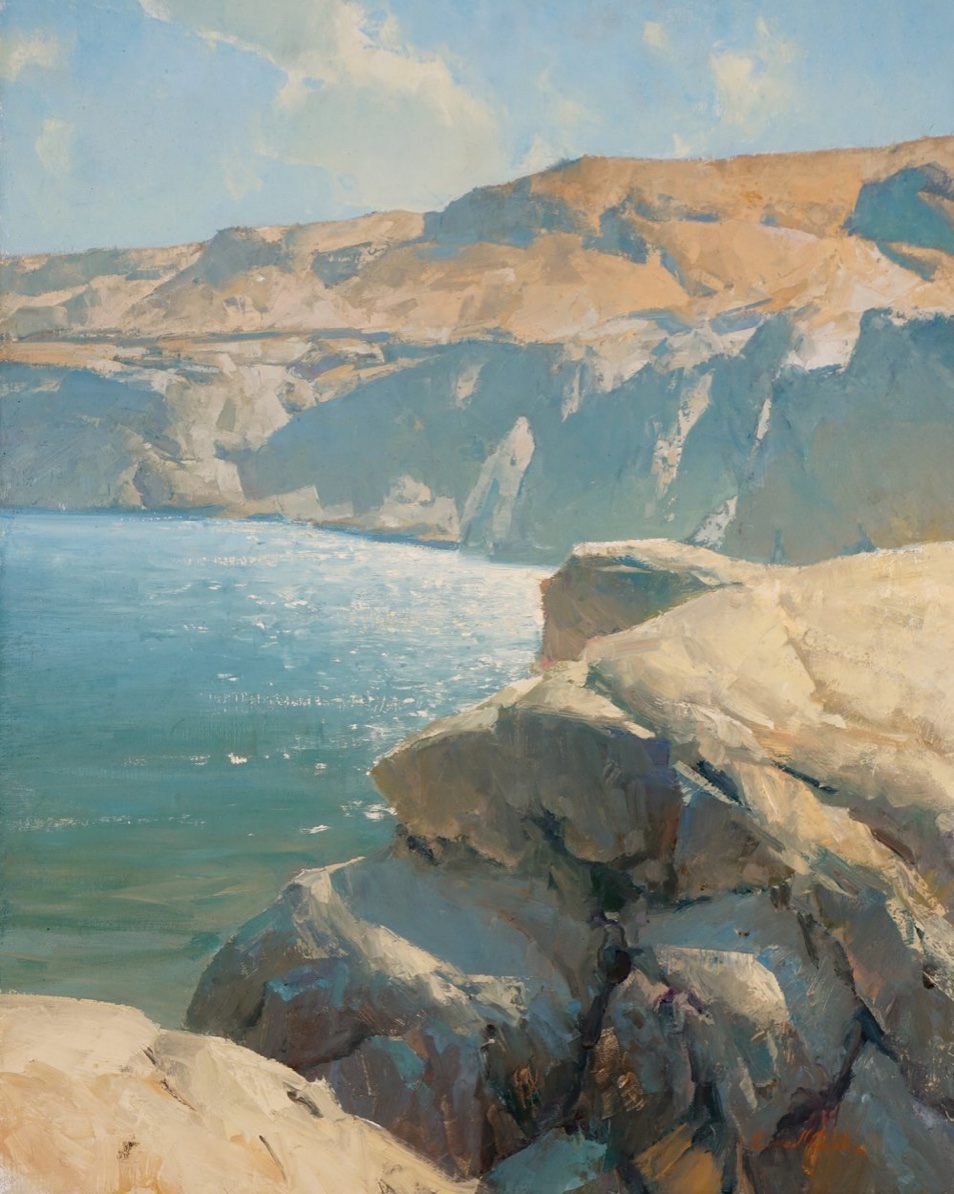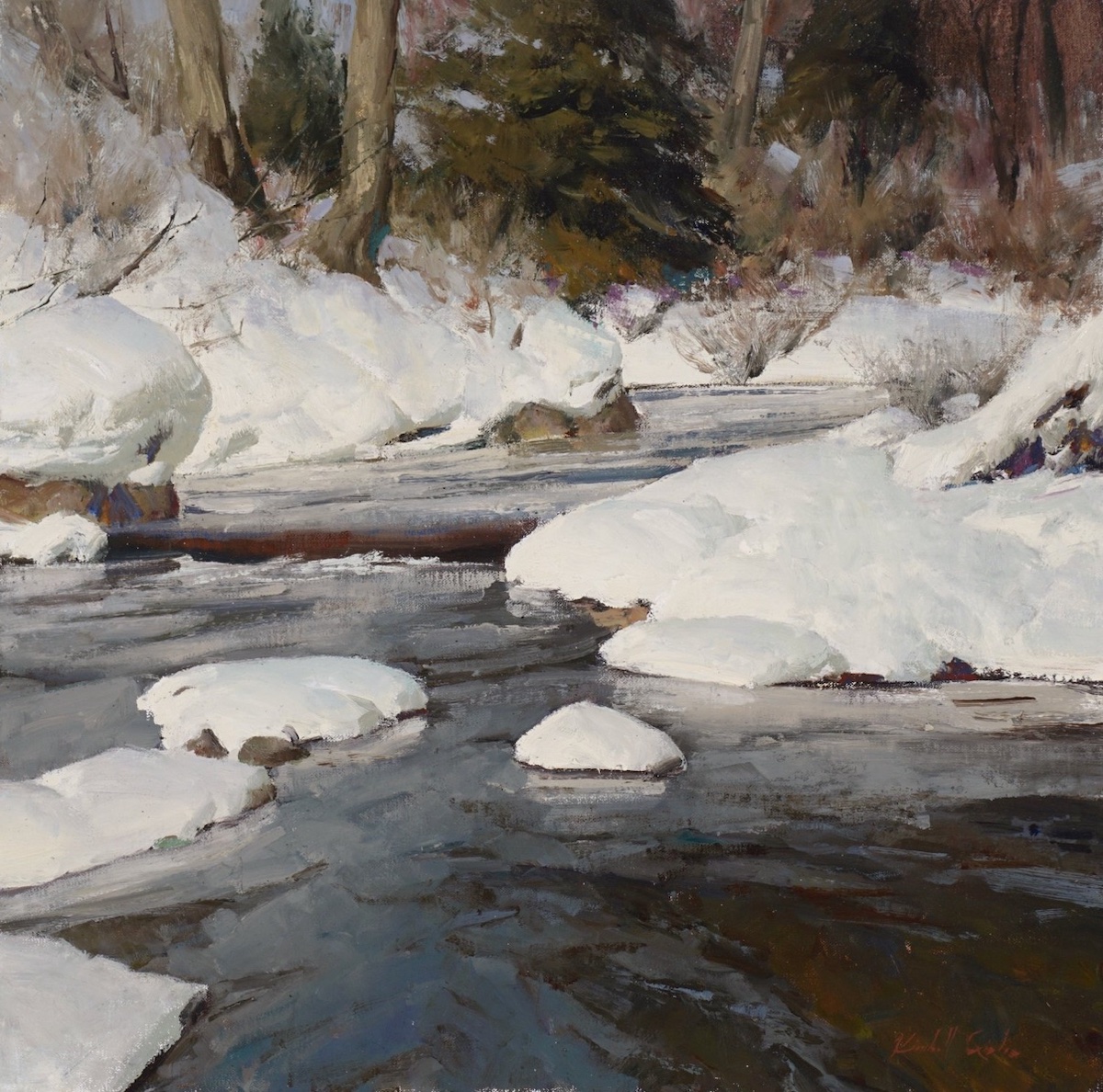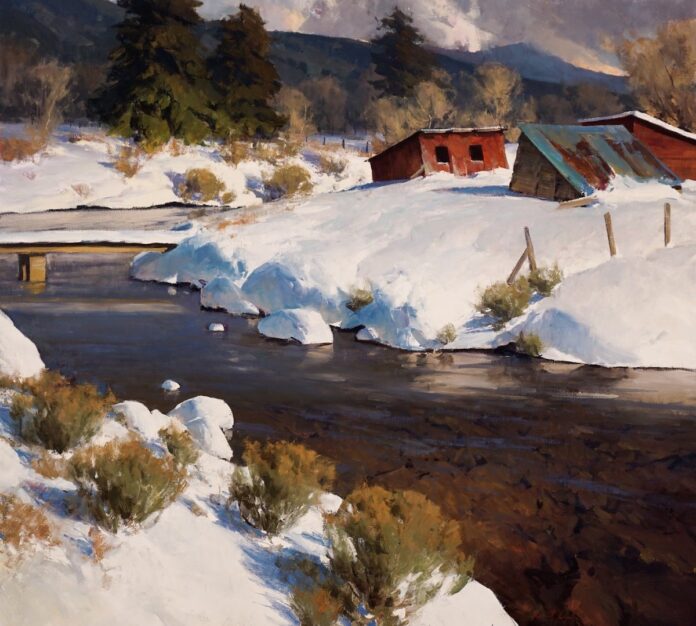On plein air painting > Kimball Geisler discovered a love for nature and the plein air life in countless intriguing natural landscapes. Read more …
Plein Air Painting as a Game of Chess
by Laura Vailati
Art enthusiast and Editor at Miami Niche
“Don’t overlook the ability for skills to speak for you,” said artist Kimball Geisler, who will be among the faculty members of Plein Air Live, March 6-8, 2024 (with an Essential Techniques Day on March 5). At the easel, Kimball’s main pursuit is a constant improvement toward higher quality painting, and it shows.
Kimball was the Grand Prize winner of the 12th Annual PleinAir Salon art competition. He was celebrated during the 2023 Plein Air Convention and Expo (PACE) with a ceremony worthy of the first prize.
This was an important juncture for Kimball, who also credits the PleinAir Salon win and subsequent media attention with requests for exhibitions in new galleries, the possibility of workshops around the United States, and the sale of paintings (particularly large-scale). “It still surprises me because it all happened so fast,” he said. “It’s kind of like a dream.”

Growing up in a suburban environment, Kimball discovered his love for nature when he moved from California to Idaho, where he lives with his family, two hours from Yellowstone Park in Montana.
Kimball was introduced to plein air when he was 17 years old. Going outdoors alone, experiencing nature, and learning how to paint at the same time was a catalyst.
He discovered a love for nature and the plein air life in countless intriguing natural landscapes: land, mountains, beautiful farms, and rural landscapes, creating an addition to nature. “It gave me the fuel to really learn the paint well,” he said.

In 2015 he received his Bachelor in Fine Arts at the Brigham Young University–Idaho (BYU), which provided him with a solid education in the fundamentals of art, studying the human figure, composition, tonal and chromatic values studies, and an assiduous study of perspective. These elements came in very useful in the representation of landscape art.
According to Kimball, it is essential for those who approach plein air painting to know drawing well and to be able to organize forms and composition in a realistic and convincing manner. Mindful of his years spent studying the rules, it is on linear perspective that he focuses his attention, recalling how artists who ignore the rules of perspective often miss the mark.

He uses an alla prima approach to plein air painting, varying his works in an instinctive and personal way. Using fine Belgium linen, he first considers the tones: “I choose the tones based on how I think they’re going to work as a painting moves on.” He uses no more than three to four tonal values laid out in simple shapes that he later refines as the composition progresses, and then he finally adjusts the compositional harmony. “It’s kind of all about value, shapes, and value structure, so grouping [these] is fundamental,” said the artist.

He says his approach is very abstract at the beginning; he drops the shapes out, fills them in with an approximate value, and then it’s a matter of getting the edges right between them. Next, he adjusts the values to get all the settled elements correct, and then he begins to add color.
Kimball puts much consideration into the edges and textures that could be: smooth, soft, hard-soft, or thick on thick. In this regard, he uses all the conventional – and unconventional – tools available to pursue his goal. He says the most important thing is to make sure he has the right amount of paint on the brush. “It has everything to do with what’s already there on my brush,” he said. “…How thick or thin my impasto is, which kind of brushes I use, how I hold the brushes, if you use a light touch or a firm touch. All of these things are super important.”

According to Kimball, who paints from life and from photos, plein air painting is critical because you will not understand the shapes of nature and the topography if you’re not out in it. Nature also offers an emotional effect that you don’t get if you’re only painting from photos.
“Plein air painting is kind of game of chess,” he said. “You can play chess without a timer, just looking approximately at a static photo or you can play with blitz-speed chess, which symbolically represents painting from life – taking care of the continuous challenges that nature offers because plein air painting forces you to use your skills.”
Visit Kimball Geisler’s website: www.kimballgeisler.com
Go from feeling afraid to show off your paintings to being proud of your skills when you join us for Plein Air Live, the premiere online art event already attended by thousands of people: March 6-8, 2024 @ PleinAirLive.com.




